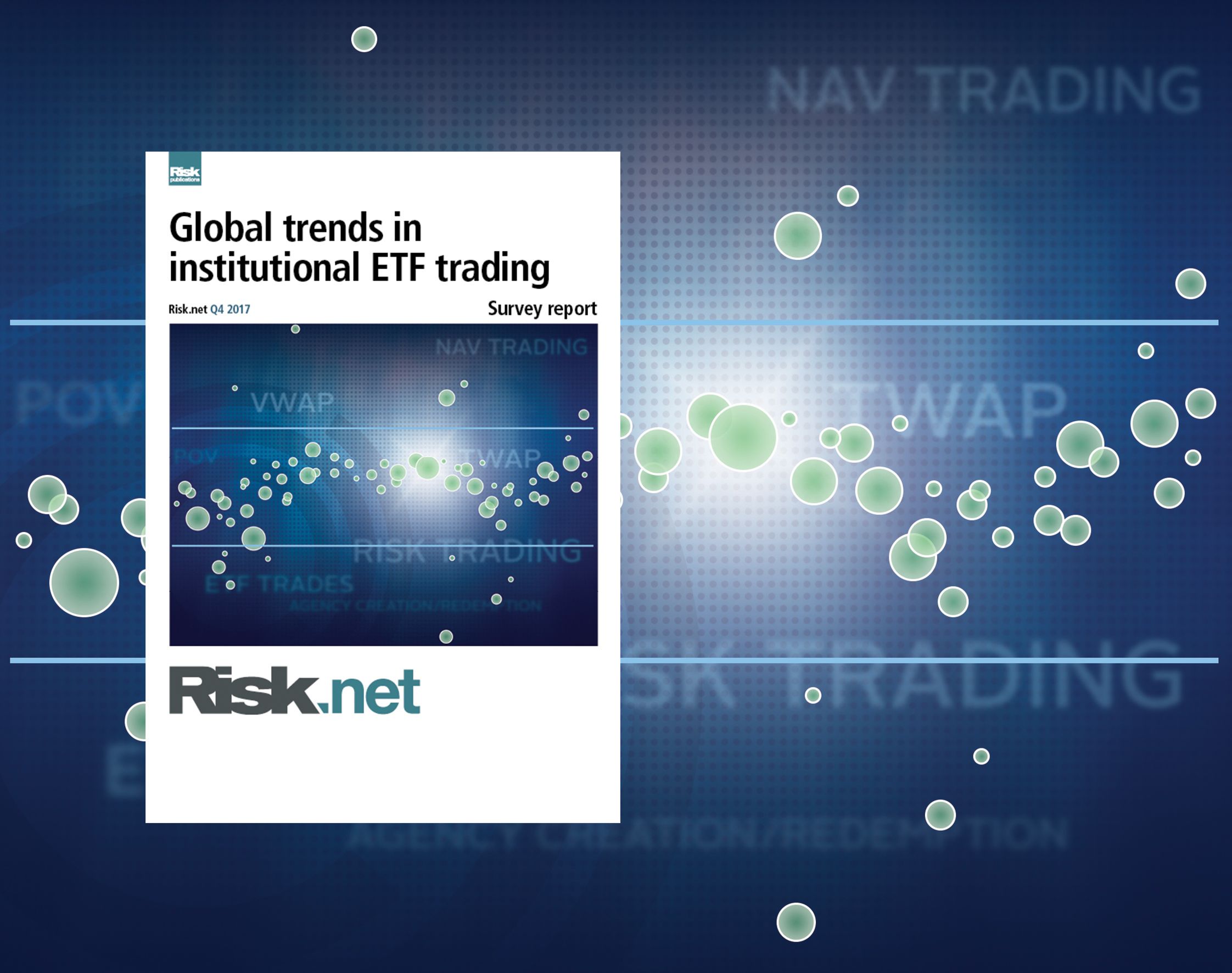Global Trends in Institutional ETF Trading
Global trends in institutional ETF trading Survey Report

In this survey report commissioned by Jane Street, one of the most active broker on the ETFs market, Risk.net presents the results of its first global exchange-traded fund (ETF) trading survey. The survey that incorporates responses from 210 Institutional investors – 86 from the US, 79 from Europe and 45 from Asia –, aims to provide insights into how institutional investors approach ETF trading, the counterparties they work with and how they evaluate liquidity. This article highlights the key findings of this report.
Key findings:
How institutions are trading ETFs
Frequency and size of trades – 30% of global respondents execute more than 50 ETF trades a month and, in Europe, 42% report trading at this frequency. This coincides with a European tendency to use ETFs more tactically. 21% of respondents executed block trades in excess of $100 million in 2016.
Request for quote (RFQ) platforms – 32% of surveyed traders report using RFQ platforms to execute ETF block trades, with Europe leading the way at 41%. Trading on RFQ facilitates price transparency for ETF users and puts a broader set of counterparties in competition for a given trade.
Order types – Risk pricing (including block trades) dominates execution styles, with 41% of respondents using it most frequently. US institutions favour risk pricing to a much greater extent than their Asian counterparts – by a margin of 44% to 16%. Likewise, heavyweight funds, with assets under management (AUM) in the $50 billion–$100 billion range, outstrip funds with AUM of $1 billion or less in their use of risk pricing by 56% to 29%.
Who institutions are trading with
Counterparties – Globally, 34% of institutions reported they most commonly execute orders through agency brokers. 29% work with independent market makers for their ETF trades and 27% are using investment banks. In Europe, market makers are the most popular counterparty, with 36% of institutions reporting trades with them; in Asia, more than 53% of institutions most commonly trade through investment banks.
Market makers – As investors seek to bolster allocations to more complex ETFs tracking less liquid underlyings, the capabilities of market makers are coming into greater focus. Key advantages include a willingness to commit firm capital, their investment in trading technology and a concentrated focus on ETFs.
How institutions evaluate liquidity
Metrics – Half of the institutions surveyed identified average daily volume (ADV) or the liquidity of the underlying securities as their preferred gauges of ETF liquidity. One-quarter are looking at bid-ask spreads on-screen, and 10% use the size of the ETF in terms of AUM as a key criteria.
Asset classes – Emerging markets and high-yield ETFs are areas where concerns around liquidity are highest, with 70% of respondents rating their level of concern as 4 or 5 on a scale of 1–5, where 1 is “not important” and 5 is “very important”.
Conclusion
The findings of this global ETF trading survey suggest that, as institutions increase their use of ETFs, they have also grown more discerning with whom they trade and how these trades are executed.
Looking ahead, this is a trend that may accelerate as institutions expand their ETF allocations to encompass funds tracking less liquid and more volatile assets. Emerging-market equities and high-yield credit are good examples. Here, selecting an appropriate counterparty and trading strategy can help investors achieve best execution.
Additional factors may influence institutions’ trading behaviours. A tighter focus on trade execution will make institutions more price-sensitive. This is especially true in Europe, where the rise of RFQ platforms, coupled with incoming regulation, will push firms to be more discriminating in their selection of counterparties. Indeed, certain market participants are already reassessing their counterparties ahead of the implementation of the Markets in Financial Instruments Directive II (Mifid II).
Worldwide, a switch in the present market environment could trigger a wholesale transformation in trading activity. The historically low-volatility regime has bolstered the attractiveness of algorithmic trading, as investors do not expect large price swings to complicate their orders. An uptick in volatility could lead investors to increasingly favour risk pricing.
Congratulations @akash77! You have received a personal award!
Click on the badge to view your Board of Honor.
Do not miss the last post from @steemitboard:
Congratulations @akash77! You received a personal award!
You can view your badges on your Steem Board and compare to others on the Steem Ranking
Do not miss the last post from @steemitboard:
Vote for @Steemitboard as a witness to get one more award and increased upvotes!